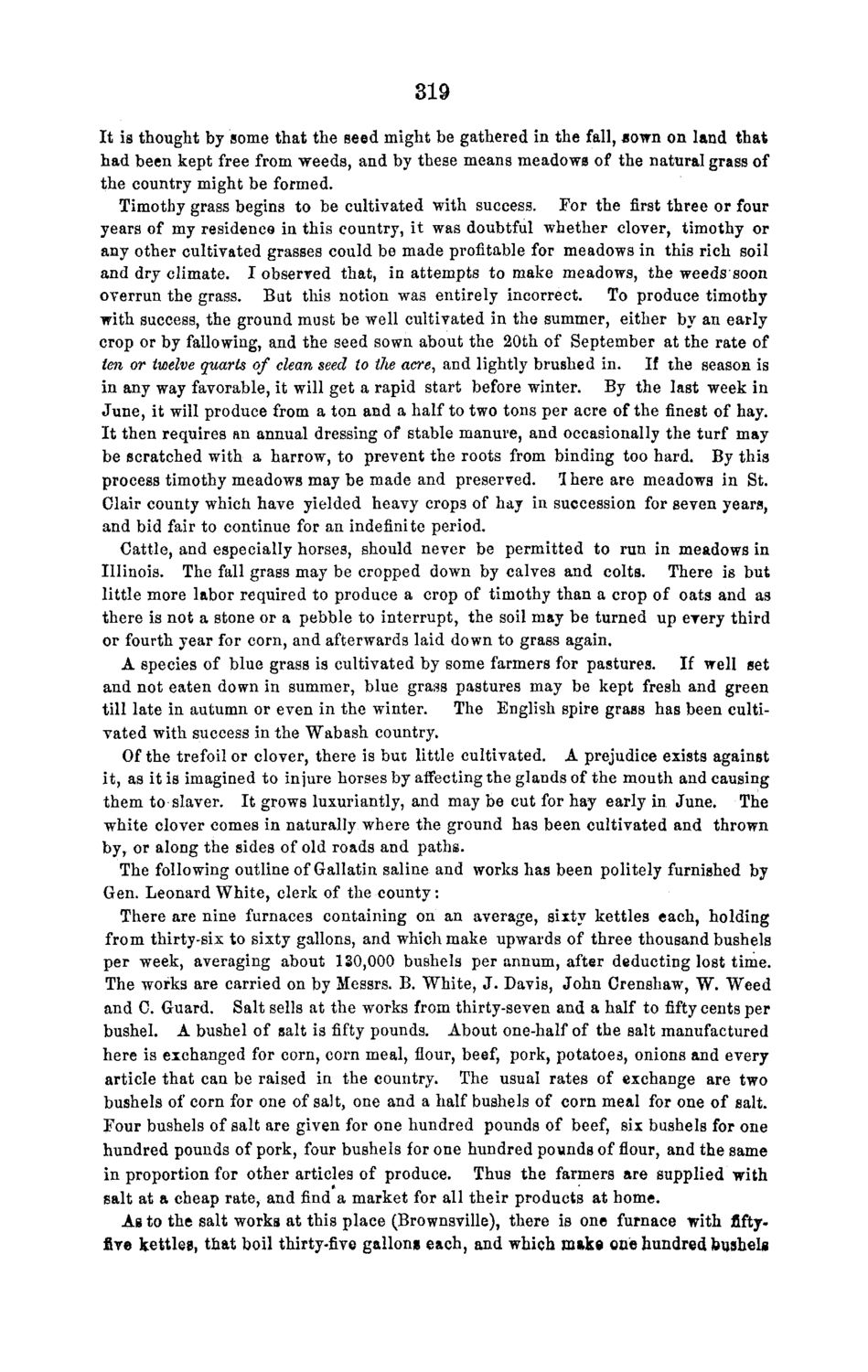| |
| |
Caption: Board of Trustees Minutes - 1868
This is a reduced-resolution page image for fast online browsing.

EXTRACTED TEXT FROM PAGE:
319 It is thought by some that the seed might be gathered in the fall, «own on land that had been kept free from weeds, and by these means meadows of the natural grass of the country might be formed. Timothy grass begins to be cultivated with success. For the first three or four years of my residence in this country, it was doubtful whether clover, timothy or any other cultivated grasses could be made profitable for meadows in this rich soil and dry climate. I observed that, in attempts to make meadows, the weeds soon overrun the grass. But this notion was entirely incorrect. To produce timothy with success, the ground must be well cultivated in the summer, either by an early crop or by fallowing, and the seed sown about the 20th of September at the rate of ten or twelve quarts of clean seed to the acre, and lightly brushed in. If the season is in any way favorable, it will get a rapid start before winter. By the last week in June, it will produce from a ton and a half to two tons per acre of the finest of hay. It then requires an annual dressing of stable manure, and occasionally the turf may be scratched with a harrow, to prevent the roots from binding too hard. By this process timothy meadows may be made and preserved. There are meadows in St. Clair county which have yielded heavy crops of hay in succession for seven years, and bid fair to continue for an indefinite period. Cattle, and especially horses, should never be permitted to run in meadows in Illinois. The fall grass may be cropped down by calves and colts. There is but little more labor required to produce a crop of timothy than a crop of oats and as there is not a stone or a pebble to interrupt, the soil may be turned up every third or fourth year for corn, and afterwards laid down to grass again. A species of blue grass is cultivated by some farmers for pastures. If well set and not eaten down in summer, blue grass pastures may be kept fresh and green till late in autumn or even in the winter. The English spire grass has been cultivated with success in the Wabash country. Of the trefoil or clover, there is but little cultivated. A prejudice exists against it, as it is imagined to injure horses by affecting the glands of the mouth and causing them to slaver. It grows luxuriantly, and may be cut for hay early in June. The white clover comes in naturally where the ground has been cultivated and thrown by, or along the sides of old roads and paths. The following outline of Gallatin saline and works has been politely furnished by Gen. Leonard White, clerk of the county: There are nine furnaces containing on an average, sixty kettles each, holding from thirty-six to sixty gallons, and which make upwards of three thousand bushels per week, averaging about 130,000 bushels per annum, after deducting lost time. The works are carried on by Messrs. B. White, J . Davis, John Crenshaw, W. Weed and C. Guard. Salt sells at the works from thirty-seven and a half to fifty cents per bushel. A bushel of salt is fifty pounds. About one-half of the salt manufactured here is exchanged for corn, corn meal, flour, beef, pork, potatoes, onions and every article that can be raised in the country. The usual rates of exchange are two bushels of corn for one of salt, one and a half bushels of corn meal for one of salt. Four bushels of salt are given for one hundred pounds of beef, six bushels for one hundred pounds of pork, four bushels for one hundred pounds of flour, and the same in proportion for other articles of produce. Thus the farmers are supplied with salt at a cheap rate, and find a market for all their products at home. As to the salt works at this place (Brownsville), there is one furnace with fiftyfive kettles, that boil thirty-five gallon* each, and which make one hundred bushels
| |